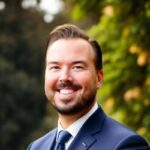Final Master Project – Co-Creating Organizational Synergy
My Final master project consisted of a preperation project of one semester and a final project of one semester. The project was executed. for a year long, internally at Accenture Amsterdam in close collaboration with my previous employer VanBerlo (now named Industrial Design).
Project Harmony (Prep)
The preparatory project aimed to address the ongoing challenge of integrating explorative and exploitative business processes following the acquisition of the design agency VanBerlo by the IT consultancy Accenture. The focus was on developing a synergy creation process (SCP) to facilitate collaboration between these two fundamentally different organizations.
The project employed a research and design methodology based on the double diamond framework (Discover, Define, Develop, Deliver). Extensive desktop research was conducted, utilizing insights from prior internal efforts, including workshops designed by predecessors. The research explored how mutual understanding between the two organizations could be enhanced to create value through synergy. Based on Frame Creation Theory and Business Dynamics models the SCP design was refined over three iterative workshops that included both junior and senior employees from Accenture and VanBerlo, aiming to tackle high task loads, enhance understanding, and ensure practical implementation.
The process identified critical challenges related to task loads and time constraints during workshops. A key recommendation was to split the workshop into digestible sessions, providing a more sustainable and effective framework for synergy creation. The results of this preparatory phase formed the foundation for the final master’s project.
Co-Creation Organizational Synergy (FMP)
The final master’s project was a continuation and expansion of the work initiated during the preparatory phase. It focused on the redesign of a synergy creation process (SCP) to improve operational and cultural synergy between Accenture and VanBerlo. This project was grounded in the practical need to merge different organizational cultures and operational models following the acquisition of VanBerlo by Accenture.
Building on the previous semester’s work, this phase involved the redesign of the initial three-phase synergy creation process into a more effective five-phase model. The new process incorporated literature-based insights and tested methods aimed at reducing task load and improving user experience during collaborative synergy workshops. Pilot studies and a real business case were used to evaluate the effectiveness of the redesigned process. Key phases included context capturing, blueprint creation, opportunity identification, and opportunity modeling.
The redesigned SCP demonstrated significant improvements in reducing participant task load and improving user experience, though challenges remained in areas like pre-session clarity and the framing of selection criteria. While the process showed promise, the evaluation did not conclusively measure the effectiveness of the results due to UX-related factors. The final recommendation was to continue refining the process, ensuring its adaptability and usability in real-world business environments.
Reviews
Development & Growth
Knowledge
During this year-long project, I expanded my expertise in multiple areas, particularly in navigating the complexities of organizational synergy between creative and corporate entities. I developed a deep understanding of the exploration-exploitation tension, a crucial concept in innovation management, and the operational challenges of mergers and acquisitions. My knowledge grew around dynamic capabilities, sensemaking models, and how they impact the success of collaboration between distinct organizational cultures. This was particularly relevant when working with Business Dynamics Modeling and Frame Innovation theories, which provided a strategic foundation for synergy development.
Skills
One of the most significant skills I developed was leadership in design-driven change. I honed my ability to lead and facilitate workshops that required the balancing of creative processes with business goals, while managing diverse stakeholder needs. The iterative nature of the project helped refine my process design skills, ensuring that task load and participant experience were accounted for in practical solutions. Additionally, I grew more adept at using co-creative methods in organizational settings, employing tools like service blueprints, customer journey mapping, and the business model canvas.
Furthermore, I gained practical skills in qualitative data collection and synthesis, using methods like thematic analysis to extract insights from diverse participants. This was critical in developing scalable, structured processes that facilitated communication and problem-solving across various seniority levels within Accenture and VanBerlo.
Experience
I had the opportunity to work within a highly complex corporate environment, navigating the synergies and tensions between a creative design agency and a global consultancy firm. Working with senior management and interdisciplinary teams, I improved my collaborative project management capabilities and learned how to align various perspectives towards a common goal. Additionally, piloting and testing the redesigned processes exposed me to real-world business case studies, where I could evaluate the feasibility and practicality of theoretical models.
Insights
The Balance of Exploration and Exploitation: One of the most profound insights was the realization that successful innovation depends on an organization’s ability to balance explorative (creative, new ideas) and exploitative (efficient, existing processes) activities. I saw firsthand how challenging this balance is, especially in the context of merging a creative agency with a consultancy.
Synergy Creation Requires More Than Process: While designing and testing the Synergy Creation Process (SCP), I learned that the success of such initiatives goes beyond just creating a framework or process. It requires cultural alignment, clear communication, and the careful management of cognitive overload and participant task loads to foster genuine collaboration and creativity.
Iterative Feedback is Crucial: Through the iterative cycles of design and testing, I realized how crucial real-time feedback from participants was to refining processes. Incorporating feedback loops not only reduced task load but also fostered higher engagement, allowing for more actionable outcomes. This insight has deeply influenced my approach to process design in the future.
Adaptability of Methods: I learned the importance of adaptability when implementing methods like Delphi and Group Modelling. No matter how structured the approach, each organization's unique context required flexible application and modifications to ensure effectiveness.
Conclusion
This project has been transformative for my professional development, enhancing both my leadership and design capabilities. I have become more adept at working across disciplines, bridging gaps between creative and corporate sectors. I now possess a richer toolkit of strategies for driving innovation and synergy in complex organizational environments. This experience has also deepened my understanding of how to create sustainable change within organizations, an insight that will undoubtedly shape my future career.


